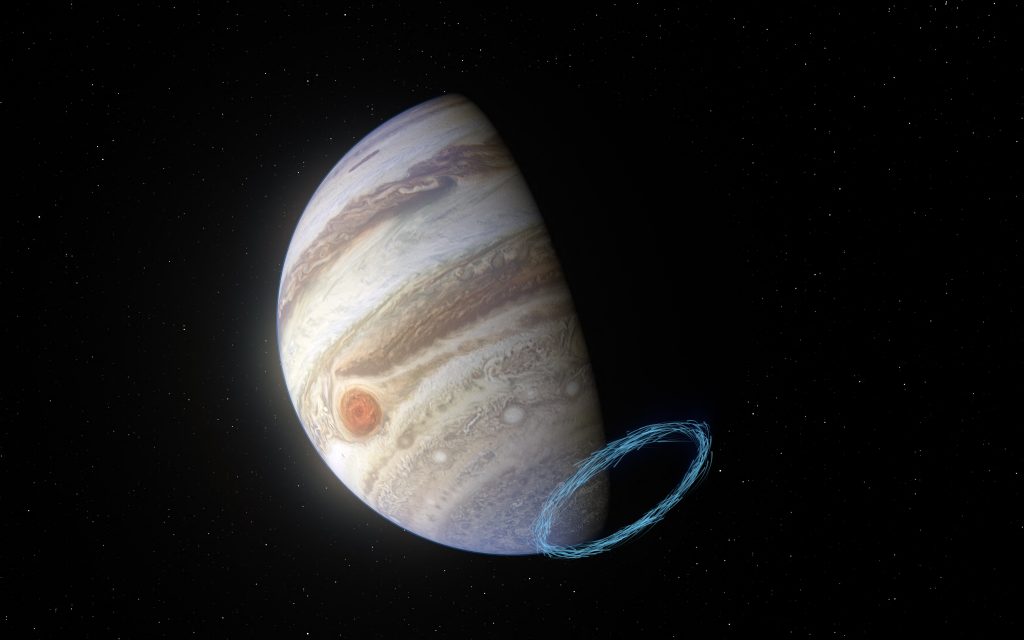
- ARAB NEWS
- 17 Aug 2025

TOKYO: A European spacecraft is set to embark on a mission to explore Jupiter’s icy moons that are believed to have oceans hidden under their surfaces, with support from Japanese research institutions.
The Jupiter Icy Moons Explorer (Juice) of a European Space Agency-led project to search for traces of life on the Jupiter moons will be launched aboard an Ariane 5 rocket on Thursday Japan time from Europe’s spaceport in Kourou, French Guiana.
While Europe led the development of the Juice probe vehicle, Japanese research institutions, including the Japan Aerospace Exploration Agency (JAXA), were involved in the development of four of the 10 observational instruments to be mounted on the probe. The Japanese institutions will also take part in scientific analyses.
To be observed are three of the four largest moons of Jupiter–Europa, Ganymede and Callisto, which are all covered with ice.
After reaching an orbit around Jupiter in July 2031, the Juice spacecraft will repeatedly perform flyby observations of three moons while making trajectory adjustments. It will be put into an orbit around Ganymede in December 2034 to conduct observations of the moon for about nine months.
Of the probe’s observational instruments, JAXA developed main parts of a laser altimeter by applying the technologies used in its Kaguya lunar explorer and Hayabusa2 asteroid probe. The altimeter will be used to collect detailed topographical information of Ganymede and precisely measure the moon’s deformations caused by Jupiter’s gravity and other factors with the aim of unraveling the inner structures of underground seas.
Japan’s National Institute of Information and Communications Technology (NICT) joined the development of a terahertz spectrometer, which will measure with high accuracy chemical compositions of what is believed to be watery vapor observed on Europa’s surface. The abundance of life-related molecules, such as carbon, nitrogen and sulfur, will be analyzed in detail.
JIJI Press